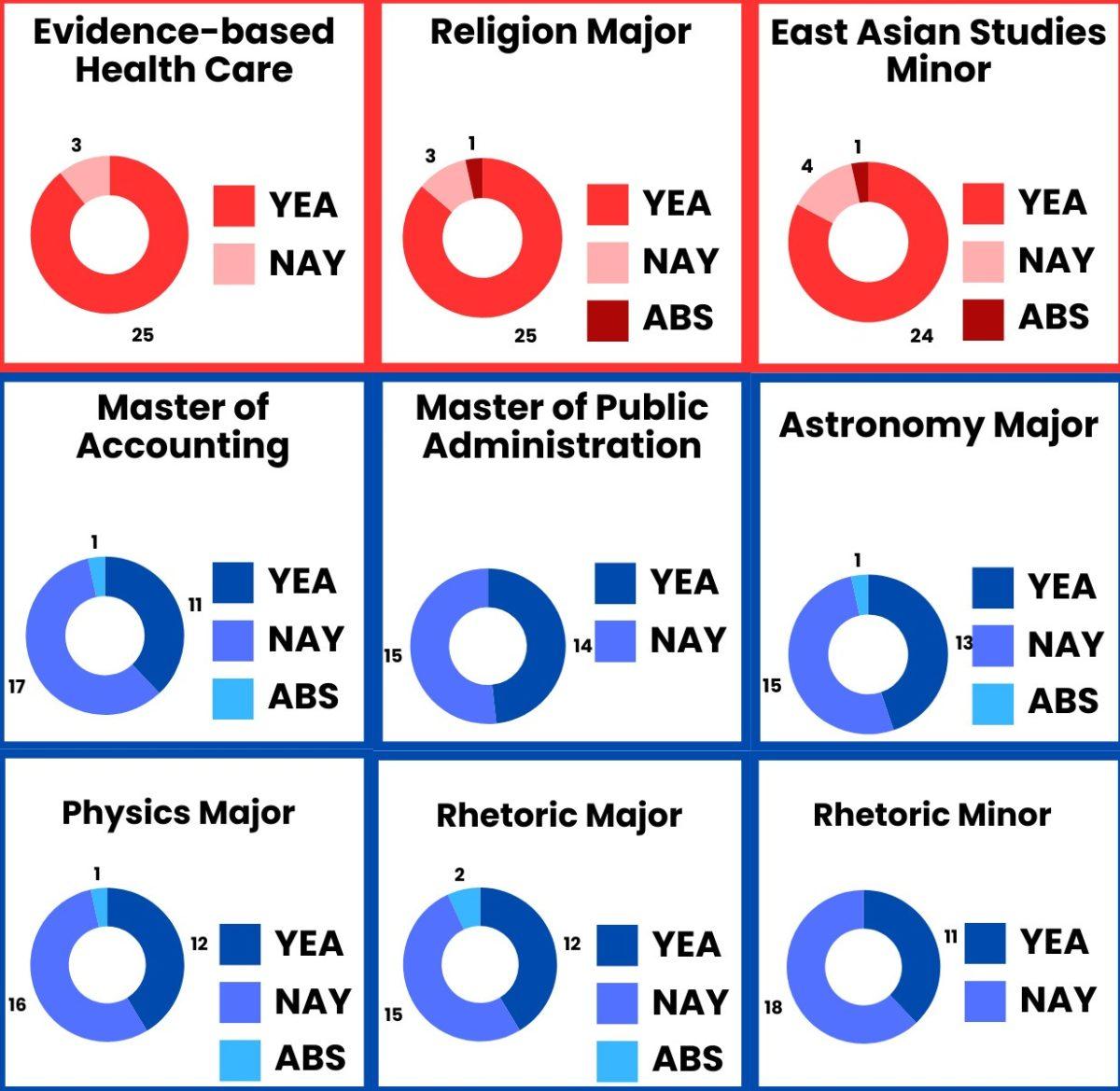File photo
MORGAN REID: DEFENSIVE SPECIALIST
When Morgan Reid, a 6-foot sophomore guard from Kansas City, came in as a freshman, she was given ample playing time, but she was timid, and she was afraid to make mistakes.
This year, though, her role on the team changed. This year, Reid became the Bulldogs’ defensive stopper.
“This year I wanted to focus on helping the team defensively and trying to be a stopper to create some energy,” Reid said. “It was a lot different role than what I was used to. I used to be really tentative and cautious, so [this new role] really helped my confidence.”
Reid averaged 5.9 points a game this season, snatched the ball 37 times, recorded 55 assists and pulled down a total of 175 rebounds, averaging 5.1 per game — the second best on the team next to senior rebounding machine Rachael Hackbarth.
But statistics are only a small window to look through when trying to understand a player’s contributions on the year. Diving for loose balls isn’t tracked, but if it were, Reid would, without question, lead the team.
“I’m always on the floor wrestling for loose balls,” Reid said. “A lot of people buy into that mentally. Doing the small things and working hard on defense, it’s good for the team.”
Often times Reid found herself assigned the tall task of guarding the opposing team’s best player, whether that’d be a post player or shooting guard. With her height, Reid has always been flexible on defense — able to closely match the height of bigs in the post, but also match the speed guards while defending the perimeter.
“She’s been a huge defensive stopper,” said Hackbarth, team captain for the Bulldogs this season. “She’s had a lot of games where she’s had to take the best player, and that was really key for us.”
The Bulldogs finished 18-16 overall and went 9-9 in conference play. Next season, the women’s team will have a brand new coaching staff.
“Looking back, we always find things that we could’ve done better,” Reid said. “But we made a really good run at the end. There’s a lot to be proud of with our season.”
After downing Evansville in the first round and Illinois State in the quarterfinals, the Bulldogs defeated Wichita State 56-52 in the semi-finals to advance to the Missouri Valley Conference championship. The Bulldogs lost to Creighton 53-38.
But the mere opportunity to play in a championship game showed how far the team had come since the start of the season.
The team had to deal with a myriad of obstacles this season: two starters left the team, and there were numerous nagging injuries to deal with.
As for personal obstacles, Reid had some knee issues, but nothing the athletic trainers couldn’t control. And once, before a game against Indiana State, Reid felt sick and worn down, but it was nothing she couldn’t fight through.
“Basketball’s a long game. You have to do what it takes and do what you can,” Reid said. “In the beginning it’s hard, but once you get in the flow of the game, all those things [bothering you] disappear.”
And perhaps that has been the theme of the women’s basketball season from beginning to end. After fighting through injury and spots to fill early on, the Bulldogs found themselves in the MVC championship.
And Reid, she did what it took and did what she could to bring bursts of intensity and energy to her team through her stalwart defense.
“She’s done a really good job getting everyone fired up,” Hackbarth said. “She brings a lot of grit as far as going after loose balls or giving that extra oomph to get a rebound that you didn’t think she could get.
“She’s a great person and a great teammate, and she has a bright future ahead of her and a lot of potential.”
SETH VANDEEST: THE ROAD TO RECOVERY
In the middle of a summer league game, junior Seth VanDeest, the Bulldogs’ starting 6’11” center, dove for a loose ball and extended his arm perhaps slightly too far. And then, the pop.
He could hear it and feel it more when it popped itself back in. It hurt worse than before, when his shoulder would pop out of place during everyday activities. Now, it was approaching unfixable.
His doctor told him it was a global tear on his labrum, and if he didn’t have the surgery to fix it right away, it might not ever be repairable.
“We had to make sure we had it taken care of before it accelerated even more,” VanDeest said.
But after the surgery, which was scheduled for July 2011, recovery would take up to seven months, leaving VanDeest with only 10 games to play in the season by the time he was ready to start going full speed again.
So VanDeest did what he had to: he listed himself as a medical redshirt. In doing so, he’d grant himself an extra year on the roster, but spending an entire season on the pine was by no means easy.
“It was disappointing, and it was hard not being able to be out there with my teammates and working every day with them, trying to get better,” VanDeest said. “It was definitely a tough year to sit back and watch.”
In his first two seasons with the Bulldogs, VanDeest started all 62 games he played.
As a freshman, he was named to the Missouri Valley Conference All-Freshman Team, was named to two All-Tournament teams, set the school record in free throws made as a freshman (80) and approached breaking various other single-season, freshman-set records.
As team captain in his sophomore season, he posted an equally impressive outing with a season-high of 26 points, averaging 8.8 points per game.
“I wanted to be out there helping my team, but that’s just the way the game goes,” VanDeest said. “Injuries are part of the game. I just had to adjust the best I could and have the best attitude I could.”
Not being on the floor didn’t stop VanDeest from maintaining his leadership role off the floor.
While watching game film, head coach Mark Phelps often times found himself averting his attention toward the bench — VanDeest’s reactions to a good or bad play were full of expression.
“You don’t watch film to watch what guys do on the bench,” Phelps said.
Watching VanDeest interact with the game from the sidelines caught Phelps’s attention over and over.
“I must’ve rewound it six times,” Phelps said. “I showed it as a clip in our film session to model what a great teammate is all about.”
Phelps was impressed with VanDeest’s continued role as a team leader regardless of his absent contribution on the court.
“He was a terrific leader despite the fact that he wasn’t playing,” Phelps said. “Your great leaders are typically in the trenches — blood, sweat and tears. Because of their effort, determination and performance, that’s what makes them a leader. The performance part is important in being a leader, and despite him not being able to do that, he still was a great leader.”
For rehab, VanDeest drove out to West Des Moines three times a week for an hour-long physical therapy session. When he was not in West Des Moines, he was with the Drake athletic trainers, working to regain strength and to regain the range of motion in his shoulder. He did this for an hour each day during practice.
“Sometimes he did it in the gym on the practice court, and guys were able to see that,” Phelps said. “He was very instrumental in our success this year.”
However, his 6’11” presence in the post was sorely missed.
“He’s one of the best centers in the league,” Phelps said. “When you get the ball to him in the post, Seth has the unique ability to create offense both for himself and his team. He would’ve had a great year.”
From VanDeest’s standpoint, it was more than just the offense and defense, passing, rebounding and scoring that he missed.
“I missed the competition, the camaraderie with my teammates — being able to go out there and compete and play in front of the Knapp Center crowd,” VanDeest said. “When we fill up the Knapp Center, it’s one of the best crowds, one of the best home court advantages we could have.”
But there is a silver lining to VanDeest’s season spent on the sideline.
He was able to increase his lower body strength tremendously, and he hopes that this new strength will improve his rebounding skills. Plus, the extra year as a fifth-year senior will be beneficial not only for VanDeest, but especially for his team.
Through it all, VanDeest realized that obstacles are not the end-all in the game of basketball. They create a new sense for one’s role on the team, and VanDeest was able to fully discover that.
“Injuries are a part of the game. It was hard on me, but my teammates supported me, my coaches supported me, my family supported me. It wasn’t the end of the world. I just had to move on from it and move forward,” VanDeest said.






